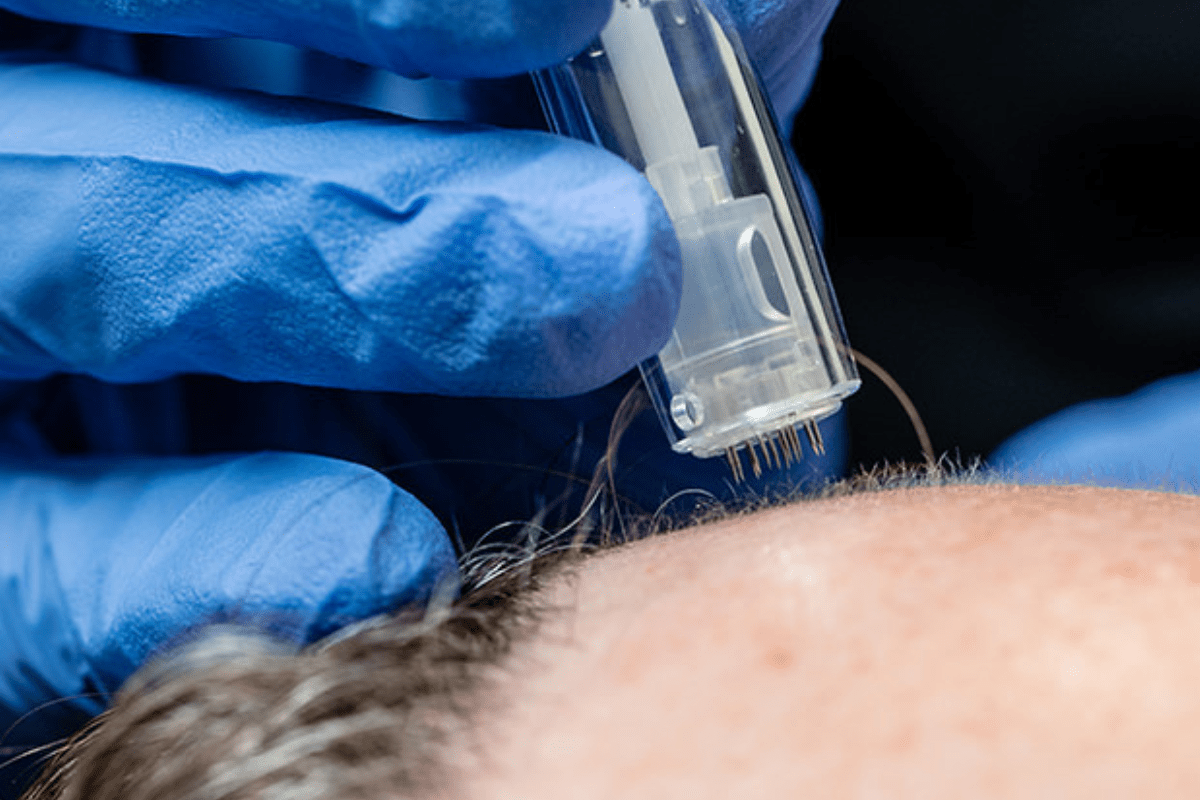When patients come to see me to help them improve their skin’s appearance and health, I’ll often consider whether or not they are good candidates for microneedling and PRP (or Platelet-Rich Plasma) treatments, two of the most popular skin rejuvenation treatments used today. While both treatments have similarities, they are quite different in terms of benefits. That explains why the two are often both used in a treatment plan to optimize results for the patient. In this post, I’ll go over the differences, benefits, results, and risks of microneedling and PRP.
Microneedling: What Is It?
You might have also heard of microneedling referred to as collagen induction therapy. It’s a minimally invasive procedure that uses a small device with multiple fine needles that puncture the skin. These tiny punctures or micro-injuries stimulate the skin’s natural healing process, which promotes the production of collagen and elastin, two essential components that keep the skin looking youthful, firm, and smooth.
The procedure is relatively quick, and patients can resume their normal activities shortly after treatment.
Platelet-rich Plasma (PRP): What Is It?
PRP, on the other hand, is a treatment that involves drawing a small amount of blood from you, spinning it in a centrifuge to separate the plasma and platelets, and then injecting the concentrated PRP back into your skin. The platelets themselves contain growth factors and they help supercharge your skin’s rejuvenation and repair by stimulating the production of collagen, elastin, and new blood vessels.
PRP is a natural treatment that leverages the power of your own blood to stimulate the healing process so it’s safe and effective for most patients.
Differences Between Microneedling and PRP
Both microneedling and PRP are skin rejuvenation treatments that promote collagen production but they work in different ways and offer different benefits. Let’s break that down.
What makes it work?
Microneedling works by creating micro-injuries in the skin, which stimulates the body’s natural healing process and promotes collagen and elastin production. PRP, on the other hand, works by injecting concentrated platelets into the skin, which releases growth factors that stimulate collagen and elastin production.
The Benefits
Microneedling can help reduce the appearance of fine lines and wrinkles, minimize pores, improve skin texture and tone, and reduce acne scars.
For its part, PRP helps to improve skin texture and tone, reduce the appearance of fine lines and wrinkles, and improve acne scars.
Safety Considerations
Both microneedling and PRP are safe and effective treatments, full stop. That said, it’s important to know that both have a small risk of infection since they both involve puncturing the skin.
Cost
Microneedling treatments will vary depending on a few factors including the area being treated and the number of sessions required to get the results you want.
The cost of PRP is typically higher due to the more technical process: drawing blood, spinning it in a centrifuge, and injecting the concentrated PRP back into your skin.
Which Treatment Is Right for You?
Making a decision about choosing microneedling or PRP—or both— depends on your individual needs and goals. Talk to your doctor about what results you’d like to achieve; together, you can outline a holistic plan that’s customized and appropriate for you. Don’t be surprised, though, if your doctor suggests both microneedling and PRP. Having both as part of your treatment plan is common because they work synergistically—the microneedling creates tiny channels in your skin which allows the PRP to penetrate more deeply into the tissue. The growth factors in PRP help accelerate healing and stimulate collagen while the microneedling helps to maximize absorption and distribution of the PRP throughout the skin. Incredible, isn’t it?
To wrap up, I’ll say that combining microneedling and PRP in your treatment plan can lead to significant results in terms of improving the appearance and health of your skin. If you’re looking for those results, consider these two treatments—and talk to us about them!
Are you ready to open a discussion about your medical aesthetics journey? Reach out to us to book your free consultation.

